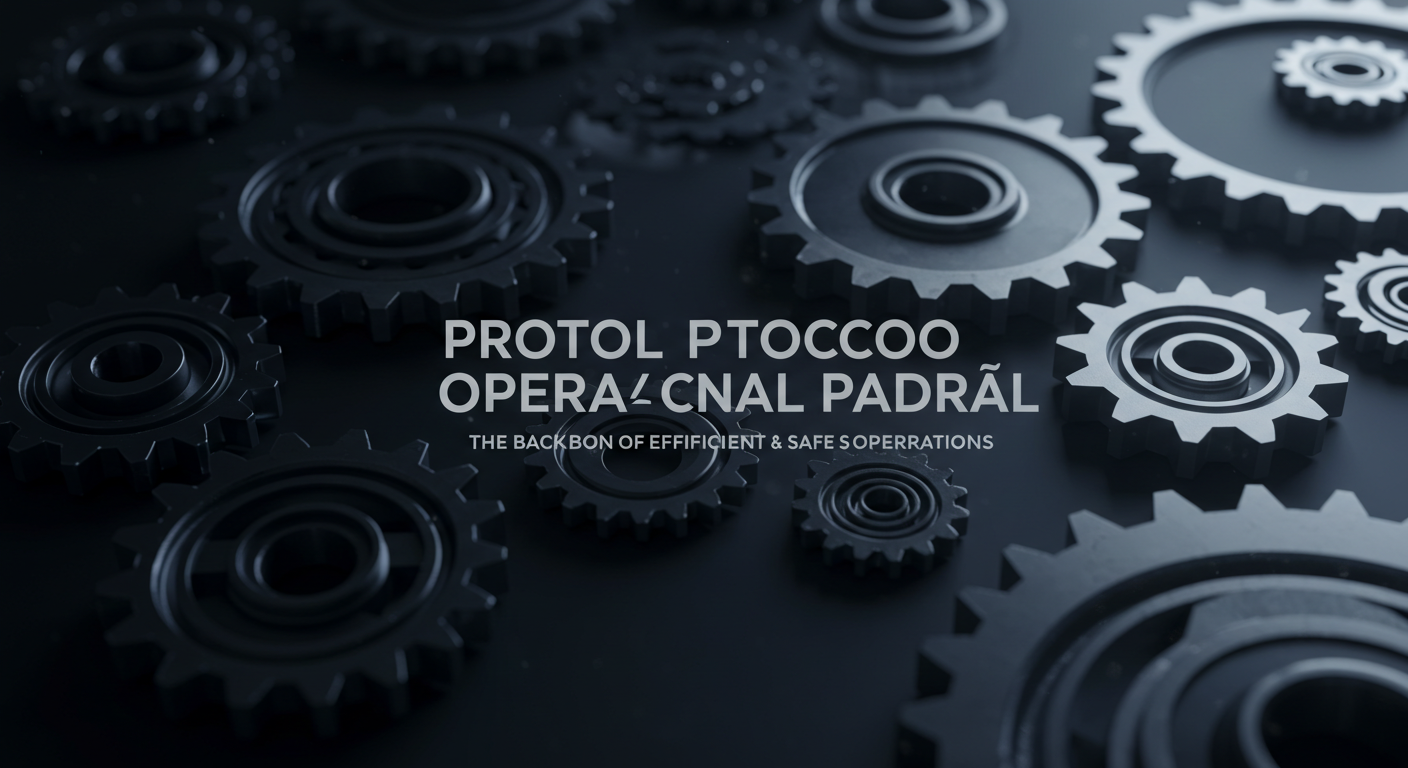In any organization where processes are repeated regularly, the need for structure and consistency becomes essential. This is where the protocolo operacional padrão comes into play. Translated as “standard operating procedure,” this structured document outlines every step of a task, ensuring that it is performed consistently, safely, and efficiently every time. No matter the industry—healthcare, logistics, education, or manufacturing—a clearly written protocolo operacional padrão is a crucial tool for maintaining quality and reducing risk.
What is a Protocolo Operacional Padrão?
A protocolo operacional padrão (POP) is a written guide that provides detailed instructions on how to execute specific tasks within an organization. It ensures that each task is performed exactly the same way, regardless of who completes it.
Rather than relying on memory or informal training, a POP creates a standardized routine. This structure minimizes errors, improves safety, and ensures compliance with both internal standards and external regulations.
Why Every Organization Needs a Protocolo Operacional Padrão
### 1. Consistency Across the Board
When teams follow a protocolo operacional padrão, the result is a consistent workflow. Repetition breeds reliability, and this uniformity directly impacts the quality of the final product or service.
### 2. Reduced Training Time
For new employees, learning how to do something from scratch can be overwhelming. With a documented POP, onboarding becomes faster and easier. Employees can study the steps independently, reducing the need for excessive supervision.
### 3. Improved Safety and Compliance
Industries like pharmaceuticals, food service, and aviation rely heavily on safety protocols. A protocolo operacional padrão enforces strict adherence to safety guidelines, lowering the risk of accidents, contamination, or violations of legal standards.
### 4. Quality Control
By ensuring everyone performs tasks the same way, a POP helps maintain high-quality results. In production settings, for instance, this consistency avoids defects and customer complaints.
Core Elements of a Protocolo Operacional Padrão
To be effective, a protocolo operacional padrão should include several fundamental components:
-
Objective – Describes the purpose of the procedure.
-
Scope – Defines where and when the POP applies.
-
Responsibilities – Lists who is responsible for each step or decision.
-
Materials and Equipment – Identifies tools and resources needed.
-
Step-by-Step Process – Offers clear, numbered steps in logical order.
-
Safety Warnings or Notes – Provides essential safety or compliance instructions.
-
Review Date – States when the POP should be reviewed or updated.
When all these sections are covered, the POP becomes a powerful reference tool for any employee.
Protocolo Operacional Padrão in Action: Industry Examples
### 🏥 Healthcare
In hospitals, protocolo operacional padrão governs everything from sterilization techniques to patient discharge procedures. Medical errors are minimized, and patient care remains uniform.
### 🏭 Manufacturing
Factory operations rely on POPs to ensure each product is assembled or packaged the same way. This keeps machines calibrated, minimizes defects, and improves efficiency.
### 🧪 Laboratories
In labs, strict processes must be followed for sample handling and testing. The protocolo operacional padrão ensures accuracy and scientific integrity.
### 🛒 Retail and Customer Service
Retail chains use POPs for opening and closing procedures, inventory checks, and returns handling—ensuring a consistent customer experience across locations.
How to Create an Effective Protocolo Operacional Padrão
Creating a successful POP doesn’t need to be complex, but it must be clear, complete, and practical.
### 1. Map the Process
Start by understanding the full process. Walk through the task, observe it being done, and identify any potential risks or bottlenecks.
### 2. Involve the Team
Include employees who regularly perform the task. Their input is vital to making the protocolo operacional padrão accurate and realistic.
### 3. Write with Clarity
Use simple, direct language. Number each step, use bullet points, and avoid vague instructions. If necessary, include photos or diagrams.
### 4. Test the Procedure
Before rolling it out, have several people follow the POP and provide feedback. Make adjustments as needed.
### 5. Review and Update Regularly
A protocolo operacional padrão should not be static. As technology evolves or new challenges emerge, review and revise the document to keep it relevant.
Challenges in Using Protocolo Operacional Padrão
While POPs offer immense benefits, they also come with challenges if not implemented correctly.
🚫 Resistance from Staff
Some employees might view the protocolo operacional padrão as unnecessary bureaucracy. Clear communication and training are key to overcoming this mindset.
⚠️ Overcomplication
A POP that’s too long or too complex defeats its purpose. Always aim for clarity and brevity.
📉 Neglecting Updates
An outdated POP can lead to inefficiency or even legal risks. Make it a habit to revisit your protocols annually—or whenever major changes occur.
Digitalization of Protocolo Operacional Padrão
Modern businesses are moving away from printed manuals and toward digital platforms. A digital protocolo operacional padrão stored in the cloud is easy to access, search, and update. Many companies are integrating these into their internal communication tools or enterprise software for better compliance and traceability.
Final Thoughts on the Value of Protocolo Operacional Padrão
A protocolo operacional padrão is not just a document—it’s an essential part of a company’s infrastructure. Whether you’re a small business or a global corporation, adopting and maintaining POPs will ensure that your operations run efficiently, safely, and consistently.
In an unpredictable world, standardization brings peace of mind. It empowers your team, safeguards your clients, and strengthens your brand’s reliability. Investing in well-crafted protocols today ensures long-term success tomorrow.

